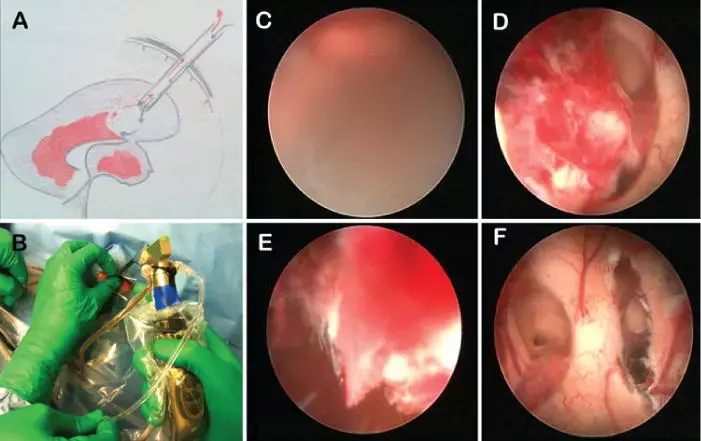- Home
- Medical news & Guidelines
- Anesthesiology
- Cardiology and CTVS
- Critical Care
- Dentistry
- Dermatology
- Diabetes and Endocrinology
- ENT
- Gastroenterology
- Medicine
- Nephrology
- Neurology
- Obstretics-Gynaecology
- Oncology
- Ophthalmology
- Orthopaedics
- Pediatrics-Neonatology
- Psychiatry
- Pulmonology
- Radiology
- Surgery
- Urology
- Laboratory Medicine
- Diet
- Nursing
- Paramedical
- Physiotherapy
- Health news
- Fact Check
- Bone Health Fact Check
- Brain Health Fact Check
- Cancer Related Fact Check
- Child Care Fact Check
- Dental and oral health fact check
- Diabetes and metabolic health fact check
- Diet and Nutrition Fact Check
- Eye and ENT Care Fact Check
- Fitness fact check
- Gut health fact check
- Heart health fact check
- Kidney health fact check
- Medical education fact check
- Men's health fact check
- Respiratory fact check
- Skin and hair care fact check
- Vaccine and Immunization fact check
- Women's health fact check
- AYUSH
- State News
- Andaman and Nicobar Islands
- Andhra Pradesh
- Arunachal Pradesh
- Assam
- Bihar
- Chandigarh
- Chattisgarh
- Dadra and Nagar Haveli
- Daman and Diu
- Delhi
- Goa
- Gujarat
- Haryana
- Himachal Pradesh
- Jammu & Kashmir
- Jharkhand
- Karnataka
- Kerala
- Ladakh
- Lakshadweep
- Madhya Pradesh
- Maharashtra
- Manipur
- Meghalaya
- Mizoram
- Nagaland
- Odisha
- Puducherry
- Punjab
- Rajasthan
- Sikkim
- Tamil Nadu
- Telangana
- Tripura
- Uttar Pradesh
- Uttrakhand
- West Bengal
- Medical Education
- Industry
Ventricular lavage safe and effective treatment of intraventricular hemorrhage compared with passive drainage

Ventricular lavage safe and effective treatment of intraventricular hemorrhage compared with passive drainage suggests a new study published in the JAMA Network Open.
Intraventricular lavage has been proposed as a minimally invasive method to evacuate intraventricular hemorrhage. There is little evidence to support its use.
A study was done to evaluate the safety and potential efficacy of intraventricular lavage treatment of intraventricular hemorrhage.
This single-blinded, controlled, investigator-initiated 1:1 randomized clinical trial was conducted at Aarhus University Hospital and Odense University Hospital in Denmark from January 13, 2022, to November 24, 2022. Follow-up duration was 90 days. The trial was set to include 58 patients with intraventricular hemorrhage. Prespecified interim analysis was performed for the first 20 participants. Data were analyzed from February to April 2023.
Participants were randomized to receive either intraventricular lavage or standard drainage. The main outcome was risk of catheter occlusions. Additional safety outcomes were catheter-related infections and procedure time, length of stay at the intensive care unit, duration of treatment, and 30-day mortality. The main outcome of the prespecified interim analysis was risk of severe adverse events. Efficacy outcomes were hematoma clearance, functional outcome, overall survival, and shunt dependency.
Results
A total of 21 participants (median [IQR] age, 67 [59-82] years; 14 [66%] male) were enrolled, with 11 participants randomized to intraventricular lavage and 10 participants randomized to standard drainage; 20 participants (95%) had secondary intraventricular hemorrhage. The median (IQR) Graeb score was 9 (5-11), and the median (IQR) Glasgow Coma Scale score was 6.5 (4-8). The study was terminated early due to a significantly increased risk of severe adverse events associated with intraventricular lavage at interim analysis (risk difference for control vs intervention, 0.43; 95% CI, 0.06-0.81; P = .04; incidence rate ratio for control vs intervention, 6.0; 95% CI, 1.38-26.1; P = .01). The rate of catheter occlusion was higher for intraventricular lavage compared with drainage (6 of 16 patients [38%] vs 2 of 13 patients [7%]; hazard ratio, 4.4 [95% CI, 0.6-31.2]; P = .14), which met the prespecified α = .20 level. Median (IQR) procedure time for catheter placement was 53.5 (33-75) minutes for intraventricular lavage vs 12 (4-20) minutes for control (P < .001).
This randomized clinical trial of intraventricular lavage vs standard drainage found that intraventricular lavage was encumbered with a significantly increased number of severe adverse events. Caution is recommended when using the device to ensure patient safety.
Reference:
Haldrup M, Rasmussen M, Mohamad N, et al. Intraventricular Lavage vs External Ventricular Drainage for Intraventricular Hemorrhage: A Randomized Clinical Trial. JAMA Netw Open. 2023;6(10):e2335247. doi:10.1001/jamanetworkopen.2023.35247
Keywords:
Ventricular, lavage, safe, effective, treatment, intraventricular, hemorrhage, compared, passive drainage, JAMA Network Open, Haldrup M, Rasmussen M, Mohamad N
Dr. Shravani Dali has completed her BDS from Pravara institute of medical sciences, loni. Following which she extensively worked in the healthcare sector for 2+ years. She has been actively involved in writing blogs in field of health and wellness. Currently she is pursuing her Masters of public health-health administration from Tata institute of social sciences. She can be contacted at editorial@medicaldialogues.in.
Dr Kamal Kant Kohli-MBBS, DTCD- a chest specialist with more than 30 years of practice and a flair for writing clinical articles, Dr Kamal Kant Kohli joined Medical Dialogues as a Chief Editor of Medical News. Besides writing articles, as an editor, he proofreads and verifies all the medical content published on Medical Dialogues including those coming from journals, studies,medical conferences,guidelines etc. Email: drkohli@medicaldialogues.in. Contact no. 011-43720751


